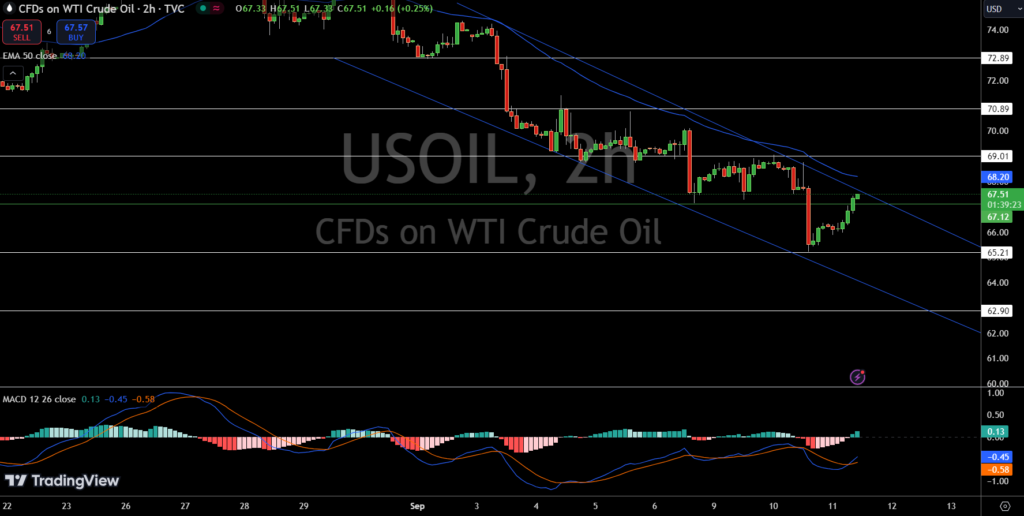The latest OPEC monthly report, released in September, maintains a largely bullish outlook on global oil demand, making only minor revisions to its forecasts. OPEC adjusted its demand projections by 0.08 million barrels per day (mb/d) for 2024 and 0.04 mb/d for 2025.
These slight reductions reflect the organization’s expectation that global economic activity will continue to support oil demand, despite uncertainties.
As a result, Crude Oil prices have remained under pressure, with West Texas Intermediate (WTI) trading near $67.68 and Brent Crude at $71.14.
US Dollar Impact and Broader Market Reactions
The US Dollar Index (DXY), which tracks the performance of the USD against a basket of currencies, remains slightly above 101.50. The index eased marginally following Monday’s rally, with traders anticipating volatility around upcoming US economic data and geopolitical events.
While oil prices flirt with a break below the critical $67.00 mark, analysts are closely watching the interplay between the strengthening dollar and the future of global oil demand.
Despite OPEC’s largely unchanged projections, the market’s interpretation could push prices even lower, especially if production cuts are not deepened.
Key Factors Driving Oil Prices Lower
Several external factors are contributing to the current downward pressure on crude oil:
- Russian Oil Revenues: Russia’s oil revenues have hit the lowest levels since February, driven by plunging oil prices and geopolitical challenges from the ongoing conflict in Ukraine.
- Tropical Storm Francine: The storm, advancing toward the Gulf of Mexico, has led to evacuations and halted offshore oil production. This could introduce supply disruptions, which typically would support oil prices.
- China’s Declining Crude Imports: A year-over-year decline of 1.2% in China’s crude oil imports has been forecasted, potentially softening global demand further.
Oil Price Outlook: Key Levels to Watch
Oil prices are at a critical juncture, and market sentiment remains mixed. Analysts predict that crude oil may face a further decline to $65.00 or even $60.00 unless OPEC takes decisive action. On the upside, key resistance levels are set at $75.27, followed by $77.43, which coincides with the 200-day Simple Moving Average (SMA).

Should prices break above these levels, a test of the $77.71 mark could ensue. However, current technical indicators suggest that the path of least resistance is downward, with $64.38—the low from March and May 2023—being the next key support.
By closely monitoring these figures and OPEC’s decisions, traders and investors can stay informed about potential market movements. Keep an eye on geopolitical events and supply disruptions that may influence prices further.

